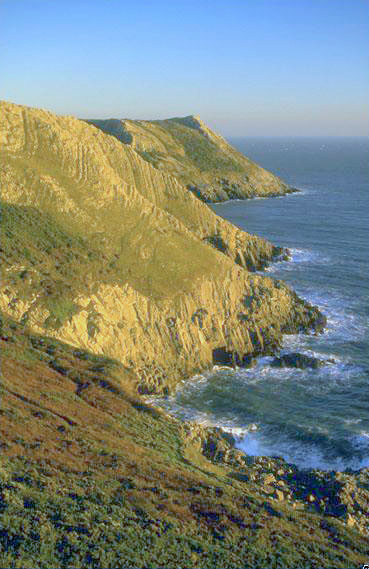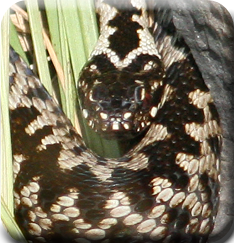| This article is incomplete. This article is missing one or more sections. You can help the BirdForum Opus by expanding it. |
Overview
Within easy reach of Swansea, the Gower Peninsula in South Wales has a well-deserved reputation for beautiful scenery and is consequently very popular with visitors.
The range of habitats found on the peninsula makes it ideal for a birding holiday with a wide variety of species present. Birds of woods and farmland, freshwaters, and rocky and sandy shores can all be found here. The area is worth visiting at any time of year but summer weekends and public holidays can be rather crowded. The pond has a well managed birdhide that is well worth the visit.
Birds
Notable Species
On the southern coast of the Gower Peninsula is the National Nature Reserve of Oxwich Bay, a sheltered sandy bay backed by dunes, behind which is saltmarsh and freshwater marsh with some extensive reedswamp and the whole bay is surrounded by limestone hills.
Breeding in the marsh are Water Rail, Mallard and Common Teal. The reedbeds have Bearded Tit, Grasshopper Warbler and Sedge Warbler. Reed Warbler is also present at one of its most westerly British localities and Cetti's Warbler is a fairly recent colonist.
The woodlands have Eurasian Sparrowhawk,Long-eared Owl and Common Buzzard, woodpeckers, both Marsh Tit and Willow Tit and there is a rookery.
In winter divers are usually present offshore with Common Scoter and other seaduck. Gadwall and Northern Shoveler can then be seen on the freshwater.
Purple Sandpiper and Ruddy Turnstone commonly feed on the rocks around Oxwich Point at the western end of the bay. Great Bittern is regular in winter and Marsh Harrier is a fairly frequent visitor in the spring and autumn.
Rarities
Rarities recorded here include Little Bittern, Purple Heron and Green-winged Teal.
Check-list
Birds you can see here include:
Little Grebe, Great Cormorant, Great Bittern, Grey Heron, Common Shelduck, Eurasian Wigeon, Gadwall, Common Teal, Mallard, Garganey, Northern Shoveler, Common Pochard, Tufted Duck, Western Marsh Harrier, Eurasian Sparrowhawk, Common Buzzard, Long-eared Owl, Water Rail, Common Moorhen, Eurasian Coot, Eurasian Oystercatcher, Ringed Plover, Red Knot, Sanderling, Purple Sandpiper, Dunlin, Common Snipe, Whimbrel, Eurasian Curlew, Bar-tailed Godwit, Common Redshank, Green Sandpiper, Common Sandpiper, Ruddy Turnstone, Black-headed Gull, Herring Gull, Common Kingfisher, Green Woodpecker, Great Spotted Woodpecker, Eurasian Skylark, Sand Martin, Barn Swallow, Meadow Pipit, Common Wren, Dunnock, Eurasian Robin, European Stonechat, Eurasian Blackbird, Song Thrush, Mistle Thrush, Cetti's Warbler, Common Grasshopper Warbler, Sedge Warbler, Common Reed Warbler, Blackcap, Common Chiffchaff, Willow Warbler, Garden Warbler, Bearded Tit, Marsh Tit, Willow Tit, Blue Tit, Great Tit, Rook, Common Starling, House Sparrow, Chaffinch, European Greenfinch, Reed Bunting
Other Wildlife
Oxwich Bay is a famous botanical site with a host of freshwater and marshland plants such as Bulrush Typha latifolia and Lesser Bulrush Typha angustifolia, Bogbean Menyanthes trifoliata, Yellow Iris Iris pseudacorus and Marsh Lousewort Pedicularis palustris.
Amongst the Marram Grass Ammophila arenaria on the dunes grow Sand Sedge Carex arenaria, Sea Holly Eryngium maritimum and Sea Spurge Euphorbia paralais with orchids in the wet slacks including Early Marsh Dactylorhiza incarnata and Southern Marsh Dactylorhiza praetermissa, Green-winged Orchis morio, Fen Liparis loeselii, Pyramidal Anacamptis pyramidalis and Marsh Helleborine Epipactis palustris. The rare Dune Gentian Gentianella uligiosa also grows in this habitat and the saltmarsh has Sea Lavender Limonium vulgare and Marsh Mallow Althaea officinalis.
There are also two very special plants in the Oxwich area, Yellow Whitlowgrass Draba aizoides grows on a wall close to the church at Oxwich and nowhere else in Britain and a very rare species of whitebeam tree Sorbus rupicola grows in local woods.
Site Information
History and Use
To do
Areas of Interest
BIRD HIDE
Access and Facilities
To reach the Oxwich reserve take the A4118 west from Swansea and turn left following signs for Oxwich village. This road passes through a range of habitats all of which are worth viewing and there is a car-park at the reserve centre.
There are nature trails and footpaths through the reserve, one over the dunes and another through scrub and woodland and up to the clifftop grassland.
Contact Details
To do
External Links
Content and images originally posted by Steve







